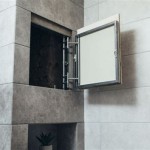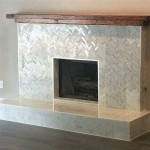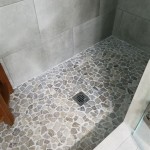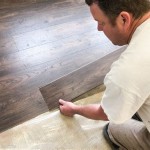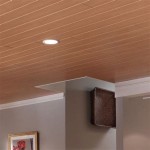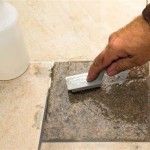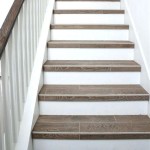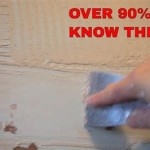Do I Need to Use Cement Board Under Tile? A Comprehensive Guide
The question of whether to use cement board under tile is a common one for both seasoned contractors and homeowners embarking on tiling projects. The answer, while appearing simple, is nuanced and depends on various factors related to the specific environment and intended use of the tiled surface. This article aims to provide a comprehensive understanding of cement board, its properties, and the circumstances under which its use is not only recommended but essential for a successful and long-lasting tile installation.
Cement board, also known as cement backer board, is a rigid, cement-based panel used as a substrate for tiling installations. It is specifically designed to withstand moisture and provide a stable, durable surface for tile adhesion. Unlike drywall or plywood, cement board is resistant to water damage, mold growth, and rot, making it an ideal choice for wet environments such as bathrooms, showers, and kitchens.
Understanding the Importance of a Suitable Substrate
The substrate is the foundation upon which tile is laid. Its primary function is to provide a level, rigid, and stable surface that will not deflect or flex under load. A weak or unstable substrate can lead to tile cracking, grout failure, and ultimately, the need for costly repairs. The choice of substrate is therefore a critical decision in any tiling project. Traditional building materials like drywall and plywood are not inherently suited for wet environments or the heavy loads imposed by tile.
Drywall, while widely used in interior construction, is highly susceptible to water damage. When exposed to moisture, drywall can swell, crumble, and lose its structural integrity. This can cause tiles to become loose and detach from the surface. Plywood, although more water-resistant than drywall, is still vulnerable to moisture-related issues, particularly in continuously wet areas. Plywood can warp, rot, and delaminate, leading to the same problems as a compromised drywall substrate.
Cement board, on the other hand, possesses properties that make it ideally suited for tiling applications, especially in wet environments. Its cementitious composition renders it impervious to water damage, preventing swelling, warping, and rot. It also exhibits exceptional strength and rigidity, providing a stable and reliable foundation for tile installations. Furthermore, cement board offers excellent adhesion properties, allowing tile mortar to bond securely to the surface.
The stability of the substrate is also crucial for preventing cracking. Tile and grout are rigid materials that have limited ability to flex. If the substrate moves or deflects, due to changes in humidity or structural settling, the tile and grout are likely to crack. Cement board is significantly more rigid than drywall or plywood, which helps to minimize movement and reduce the risk of cracking.
Situations Where Cement Board is Absolutely Necessary
There are specific situations where the use of cement board is not merely recommended but is considered an essential requirement for a successful tiling project. These situations typically involve environments with high moisture levels or areas subject to heavy loads.
Showers and Bathrooms: Showers and bathrooms are consistently exposed to high levels of moisture, making them prime candidates for cement board installation. The walls and floors of showers, in particular, are subject to direct water exposure, making moisture resistance a paramount concern. Using drywall or plywood in these areas can lead to rapid deterioration and eventual failure of the tile installation. Cement board provides a waterproof barrier that protects the underlying structure from moisture damage.
Kitchen Backsplashes: While not as directly exposed to water as showers, kitchen backsplashes are still subject to frequent splashes and spills. The area behind the sink and stovetop is particularly vulnerable to moisture accumulation. Cement board provides a durable and water-resistant surface that can withstand the rigors of a kitchen environment.
Floors: Tile floors, especially in high-traffic areas, require a stable and rigid substrate to prevent cracking and grout failure. Cement board provides the necessary support and rigidity to withstand the weight and impact of foot traffic, furniture, and appliances. In addition, cement board is less susceptible to expansion and contraction due to changes in humidity, which can contribute to cracking in other substrates.
Exterior Applications: When tiling outdoor surfaces, such as patios, decks, and balconies, cement board is essential. Exterior environments are subject to extreme temperature fluctuations, moisture exposure, and the effects of freeze-thaw cycles. Cement board is designed to withstand these harsh conditions, providing a durable and long-lasting substrate for outdoor tile installations.
In all of these scenarios, the cost of using cement board is significantly less than the cost of repairing or replacing a failed tile installation due to substrate failure.
Proper Installation Techniques for Cement Board
Even the best materials can fail if not installed correctly. Proper installation techniques are crucial for ensuring the long-term performance of cement board. The following guidelines should be followed when installing cement board:
Substrate Preparation: The substrate beneath the cement board should be clean, level, and structurally sound. Remove any loose debris, dirt, or existing flooring materials. If necessary, reinforce the framing to meet the minimum deflection requirements for tile installations. This typically involves ensuring joists are adequately spaced and sized.
Cutting and Fastening: Cement board can be cut using a utility knife, scoring tool, or circular saw equipped with a diamond blade. When cutting, wear appropriate safety gear, including eye protection and a dust mask. Fasten the cement board to the studs or joists using corrosion-resistant screws specifically designed for cement board. Space the screws according to the manufacturer's recommendations, typically every 6 to 8 inches along the edges and every 8 to 12 inches in the field.
Seam Treatment: Treat the seams between cement board panels with a fiberglass mesh tape embedded in thin-set mortar. This helps to create a seamless and waterproof surface. Apply two coats of thin-set mortar over the tape, allowing each coat to dry completely before applying the next. This creates a strong and durable joint that prevents cracking and moisture penetration.
Waterproofing: In wet areas, such as showers, it is essential to apply a waterproofing membrane over the cement board. There are various types of waterproofing membranes available, including liquid-applied membranes, sheet membranes, and fabric membranes. Follow the manufacturer's instructions for application and ensure that all seams, corners, and penetrations are properly sealed. This provides an additional layer of protection against moisture damage.
Thin-Set Mortar Selection: Choosing the appropriate thin-set mortar is critical for ensuring a strong and durable bond between the tile and the cement board. Use a modified thin-set mortar specifically designed for use with cement board and the type of tile being installed. Follow the manufacturer's instructions for mixing and application. Ensure that the thin-set mortar is properly troweled onto the cement board to achieve full coverage and optimal adhesion.
By following these installation guidelines, you can ensure that your cement board substrate provides a solid and reliable foundation for your tile installation.
In summary, while alternative underlayments exist, cement board's combination of water resistance, strength, and stability makes it the superior choice for many tiling applications, particularly in wet environments. Ignoring its benefits can lead to premature tile failure and costly repairs.
Choosing the right substrate for your tiling project is a crucial decision that can significantly impact the longevity and performance of your installation. While cement board may require a slightly higher initial investment, its superior performance and durability make it a worthwhile investment in the long run. By understanding the properties of cement board and following proper installation techniques, you can ensure that your tile installation will provide years of reliable service.

How To Install Cement Board On A Floor Diy Family Handyman

Tile Backerboard Material Options Fine Homebuilding

How To Install Hardiebacker Cement Board On Floors James Hardie Pros

Thinset Under Cement Board Yes Or No Ord Ceramic Tile

How To Install Cement Board For Tile Projects Diy Family Handyman

Cement Backerboard Floor Tile Installation Uncookie Cutter

Cement Board Installation On Floors 5 Mistakes To Avoid Diytileguy

Tile Installers Select Hardiebacker Cement Board As Most Preferred Brand 2024 02 22 Stone World

How To Install Cement Board The Home Depot

Installing Cement Backerboard For Tile Flooring Hometips
Related Posts

